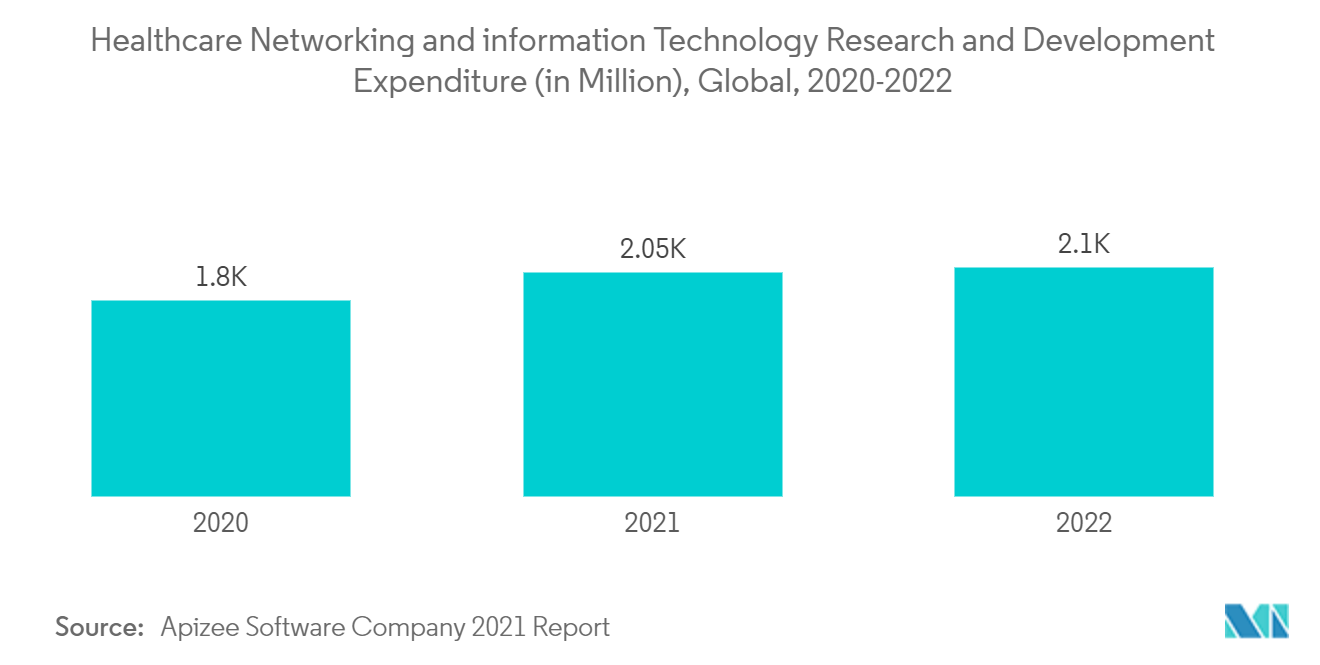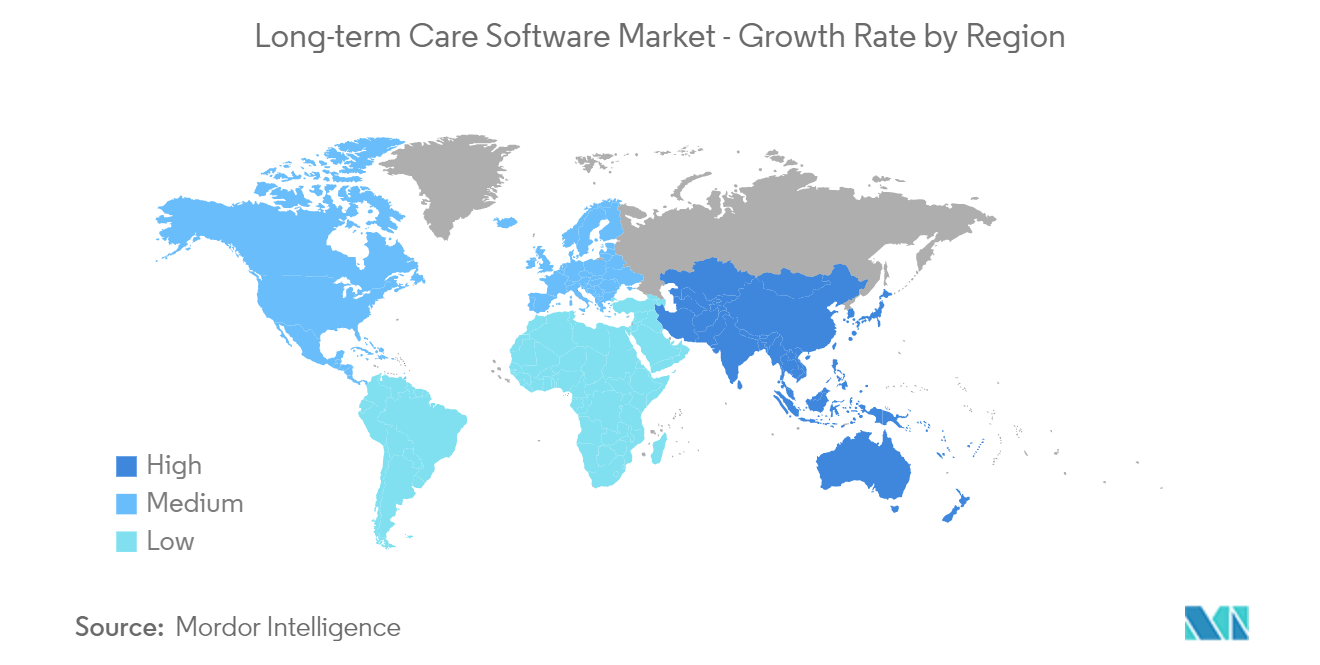Market Trends of Long-term Care Software Industry
Electronic Health Records Projected to Have Notable Growth Rate Over the Forecast Period
Electronic Health Records (EHRs) are highly useful in managing documentation, quality outcomes, and health outcomes. The boost in productivity in healthcare facilities was observed over two years. Increasing public and private financial incentives for EHR adoption is driving the growth of the overall segment. The EHR can improve the quality of care in Long-term Care facilities by reducing medication-related errors, improving clinical documentation and decision-making, and through the Health Information Exchange.
The increasing financial support governments provide through public budgets worldwide is leading to the development healthcare systems and contributing to the growth of the studied market. For instance, in April 2021, Seqster PDM Inc. invested USD 12 million, led by OmniHealth Holdings LLC and Takeda Digital Ventures, to drive Seqster's capabilities to develop and enhance its technology and boost the adoption of its healthcare data interoperability technology in healthcare. Such investments are anticipated to positively impact the segment's growth during the forecast period.
Due to the COVID-19 pandemic, patients' reliance on online sources increased, making it compulsory for healthcare providers to develop easy-to-access health record platforms. For instance, in January 2021, MEDITECH launched its COVID-19 Vaccination EHR solution, intending to streamline COVID-19 vaccine administration across health systems. These EHR registries can identify eligible patients for the vaccine and show which long-term facility residents have pre-existing conditions. Hence, these developments during the pandemic fueled the segment's growth.
Moreover, product launches are anticipated to contribute to the segment's growth. For instance, in February 2021, Capital Health launched a new EHR system across its two hospitals' acute care areas to better serve the community and its patients. In addition, in November 2022, Medidata planned to launch Rave Companion, an innovative, scalable technology helping clinical trial sites save time and reduce errors in transferring EHR data to the Rave electronic data capture (EDC) system. Rave Companion addresses the long-standing industry challenge of duplicate data entry by enabling structured and unstructured data from any electronic health record directly utilized by Rave EDC within a few clicks. These developments are further anticipated to fuel the segment's growth over the forecast period.

North America is Expected to Hold a Significant Share of the Market Over the Forecast Period
North America is expected to hold a significant market share of the overall market studied throughout the forecast period. This is due to the increasing geriatric population, favorable government policies, and widespread insurance coverage.
In North America, the high adoption rate of new technology software services nationwide is expected to further contribute to the market growth. For instance, the Drug Enforcement Administration (DEA) allowed practitioners to write prescriptions for controlled substances electronically. This allows for a reduction in prescription errors caused by illegible handwritten prescriptions. Similarly, at the national level, the National Institute on Aging (NIA) helps conduct and support research on aging and the health and well-being of older people. At the state level, some of the programs include the National Association of States United for Aging and Disabilities (NASUAD), Minnesota's Long-Term Care Choices Navigator, Massachusetts Department of Elder Affairs, and the Georgia Department of Human Services (DHS) Division of Aging Services, among others. Therefore, due to the availability of such government organizations focusing on long-term care, the demand for long-term care software is increasing in the country and driving the studied market growth.
Furthermore, the engagement of market players and government organizations is expected to contribute to the market's growth during the forecast period. For instance, in October 2021, the University of New Mexico Health System developed the MyHealthUNM patient portal and a new personal health record application called mCharts, which presents patient information in an interactive and easy-to-use format. This development is allowing patients in the University of New Mexico Health System to access their medical information online, and they are responding well to these tools.
In addition, in April 2022, Pixalere Healthcare reported the launch of its new clinically-focused EMR application, HERO (Homecare Electronic Record Outcomes). HERO is a robust digital reporting and digital forms solution allowing the full transition from paper to electronic charting, which was developed in collaboration with VHA Home Healthcare, a Toronto-based homecare provider. Also, Pixalere is planning to partner with homecare providers across Canada to introduce the benefits of HERO. Thus, such developments in the countries in North America are driving the growth of the studied market. Therefore, owing to the abovementioned factors, the market studied is expected to witness a significant share in North America.



